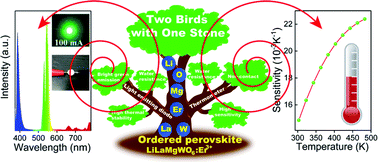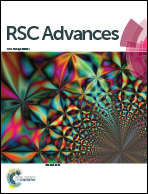Simultaneous bifunctional application of solid-state lighting and ratiometric optical thermometer based on double perovskite LiLaMgWO6:Er3+ thermochromic phosphors
Abstract
Realization of simultaneous, efficient bifunctional application of thermochromic phosphors on light emitting diodes (LEDs) and as ratiometric thermometers is significant. Herein, doped Er3+ ions are introduced as an activator into double perovskite LiLaMgWO6 host lattice. The developed phosphors can be efficiently excited by a near-ultraviolet LED chip and show bright green emission, mainly at 527 and 543 nm, as well as very low thermal quenching. Their chemical stability is studied, demonstrating excellent application potentials. Furthermore, the temperature sensing properties of LiLaMgWO6:0.01Er3+ were analyzed in the wide range of 303–483 K and show a good exponential relationship between ratiometric intensity and temperature (R2 > 0.999), as well as high sensitivity (2.24% K−1). Such a system not only optimizes the performance in solid light emitting but also provides an excellent platform for designing high-sensitivity optical thermometry.



 Please wait while we load your content...
Please wait while we load your content...